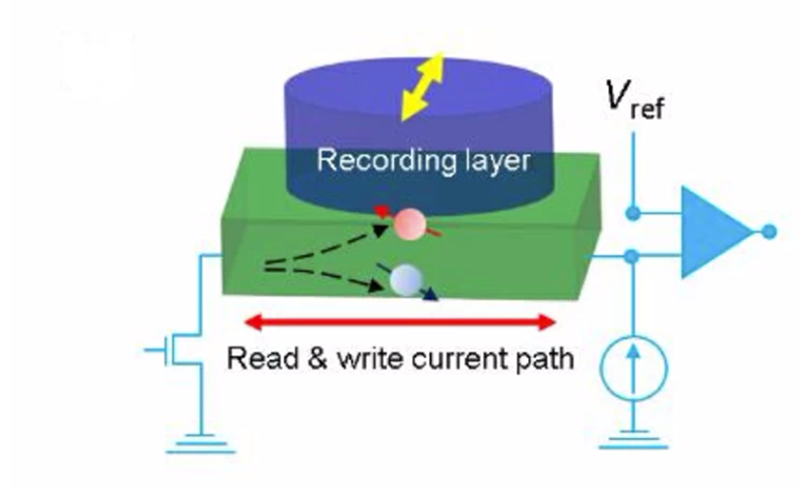Sometimes it seems as though everything old is new again. The earliest computers used magnetic memory such as magnetic core. As practical as that was compared to making for example each bit of memory be a vacuum tube or relay flip flop, newer technology such as SRAM and DRAM displaced core and similar technologies. However, some of the newest technologies once again use magnetic fields. FRAM or ferroelectric RAM and magnetoresistive or MRAM both use magnetic fields to store data. Now Japanese researchers think they are on track to make MRAM more competitive with traditional RAM chips.
The Tokyo Institute of Technology researchers use new material combinations to make chips that store data based on the spin of electrons — the underlying reason for the way magnets behave. Their recent paper discusses USMR or Unidirectional spin Hall magnetoresistance and using this effect could greatly simplify the construction of MRAM cells.
How much simpler? Conventional MRAM requires up to 30 fabrication layers. The new technology requires only two.
There are two different exotic materials and the magic happens at their interface, at which electrons with the same spin accumulate. By injecting them into the ferromagnetic layer, that layer flips its magnetic field. This works as a write operation and also changes the resistance of the structure due to USMR. An external circuit can measure this resistance change, but it is very small, especially in conventional MRAM cells — less than a 1% change.
The new materials break the 1% barrier. This makes them much simpler to read and combined with the easier fabrication should result in cheaper and denser MRAM devices.
There have been many memory technologies used over the years to store data. Among them were the really odd devices like the Radechon.















“Conventional MRAM requires UP TO 30 layers”. Yes, let’s compare laboratory tech to the most complicated available tech.
How about making a fair comparison when counting layers instead of cherry picking the worst?
I have been really interested in MRAM for a few years now with the unlimited write endurance and SRAM-comparable speeds.
Everspin seems to be the most prevalent commercial manufacturer at the moment, and their spin mram sheets make it look like 6-7 layers.
If they could get some economies of scale, I think that they could start to chip away at the density issue and get some cool newer solutions to market.
Solid-state hard-drives.
Could bubble memory be far off? Oh wait. Never mind.
Lol
That was my first thought to.
NSA RAM…. they want 1 electron per bit so their quantum computers can entangle with yours more easily and read your RAM directly *tinfoilhat*
NSA stands for No Signalling Avoided?
“FRAM or ferroelectric RAM and magnetoresistive or MRAM both use magnetic fields to store data.”
Ferroelectricity is not a magnetic effect, and no magnetic fields are involved in storing that data[1]. Ferroelectric materials retain electrostatic polarization; the “ferro-” in the name is only an analogy to the ability of ferromagnetic materials to retain magnetization.
[1] Yes, yes, time-varying currents are required so magnetic fields exist during reading and writing. Your International League of Pedants membership card is in the mail.
And multiferroic RAM is not yet close to commercialization last i checked my old group’s work…
“The earliest computers used magnetic memory such as magnetic core.” The earliest computers used whatever their inventors could come up with. Relays, positions of shafts, but even if you limit this to the earliest electronic computers, the dominant memory forms were multivibrators, electrostatic stoarge tubes or rotating drums of capacitors or acoustic delay lines. Magnetic core didn’t come into play until the mid-1950s, so you’re off by over a decade.
To a young person, anything that predates microcomputers are the earliest computers.
Earliest computers: “What, like a 486??”
That reminded me of an early computer that had a 4 bit serial CPU and a loop of wire as an acoustic delay line memory.
Unfortunately I can’t find a link to it now.
Olivetti Programma 101: https://en.wikipedia.org/wiki/Programma_101
No. It was a small unit, almost hobby like with two acoustic delay wires and a two or four bit serial CPU made from small chips like 74xx
Probably the size of a large hobby project box.
I guess this MRAM works better than your BRAM (biologic random access memory).